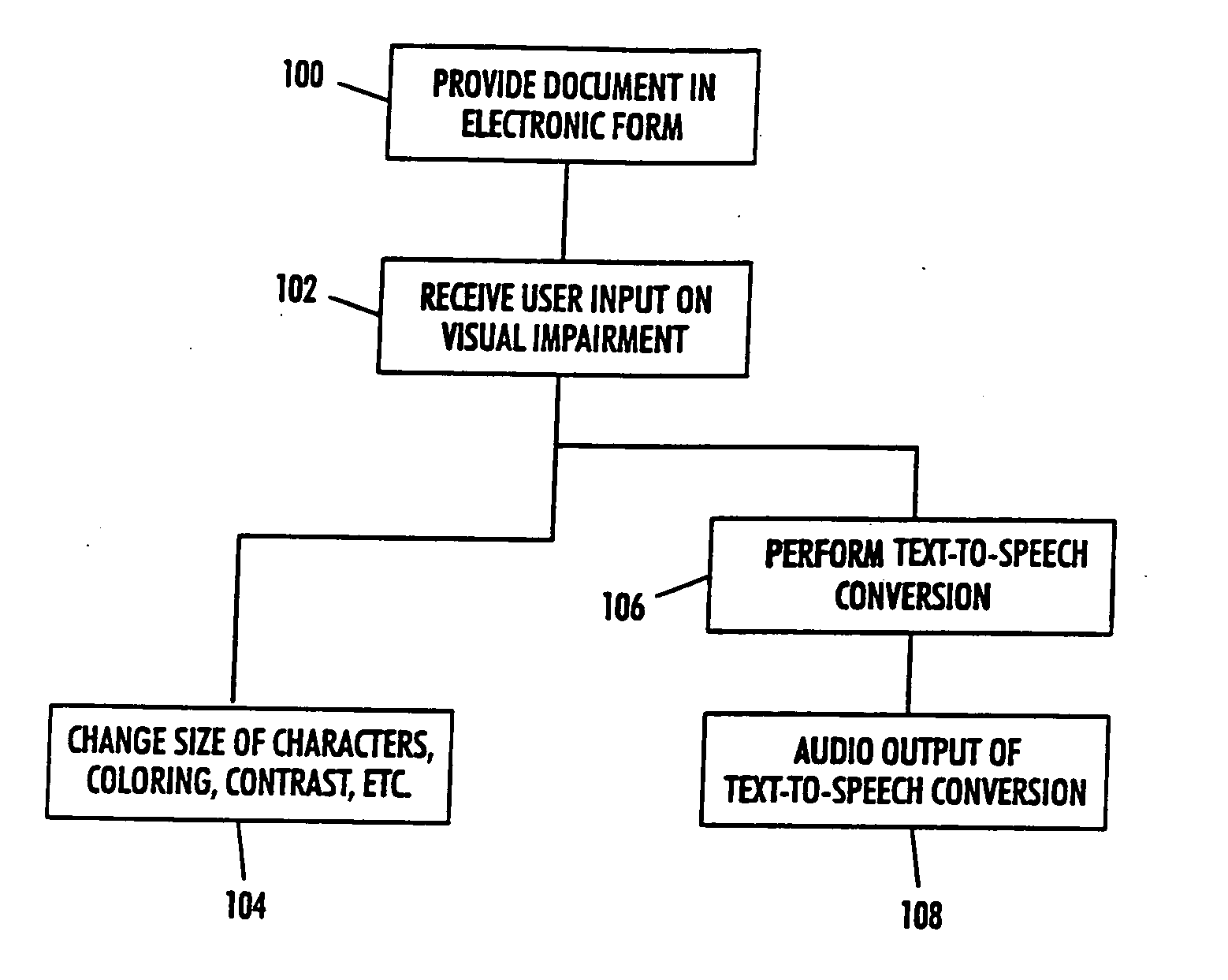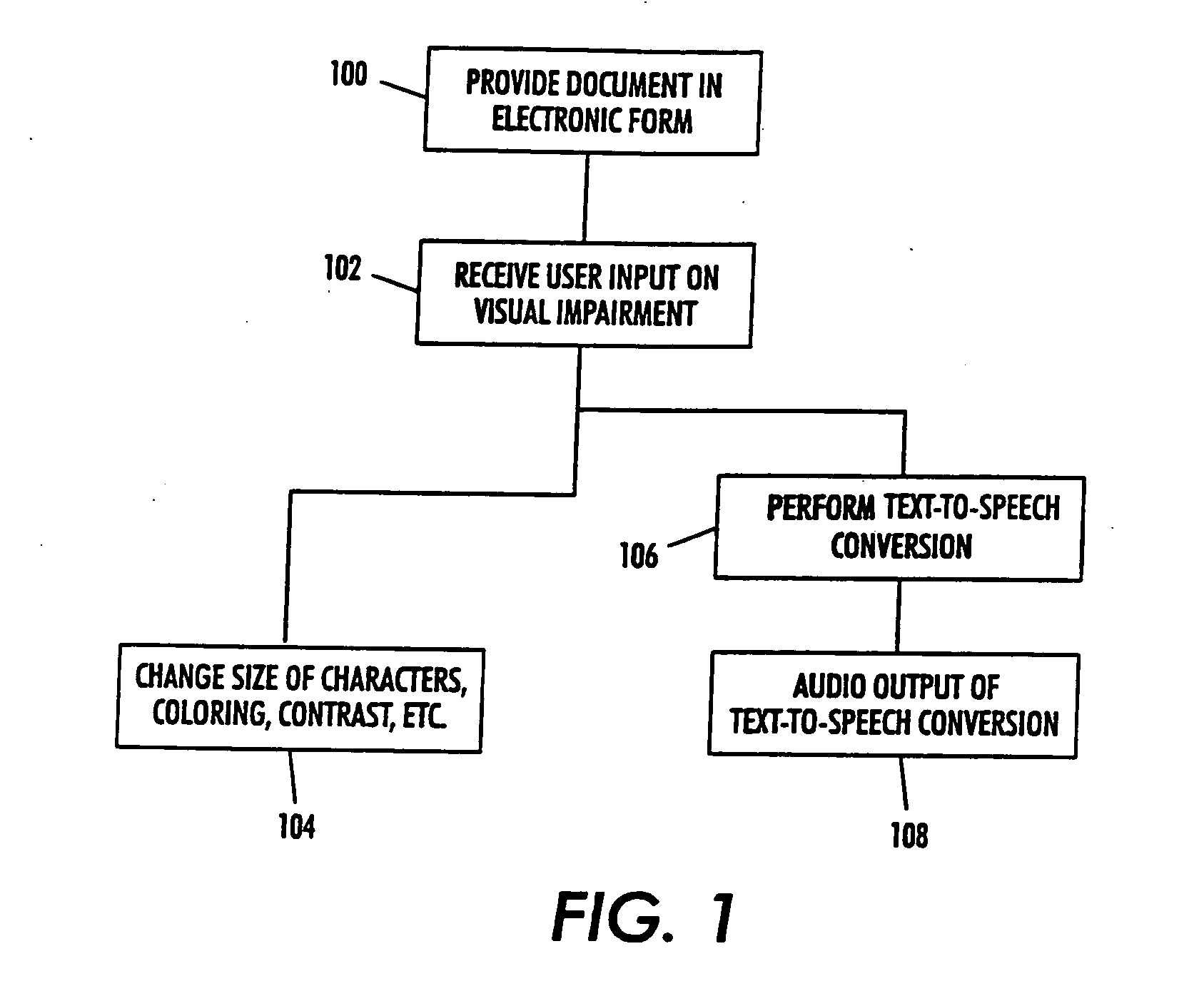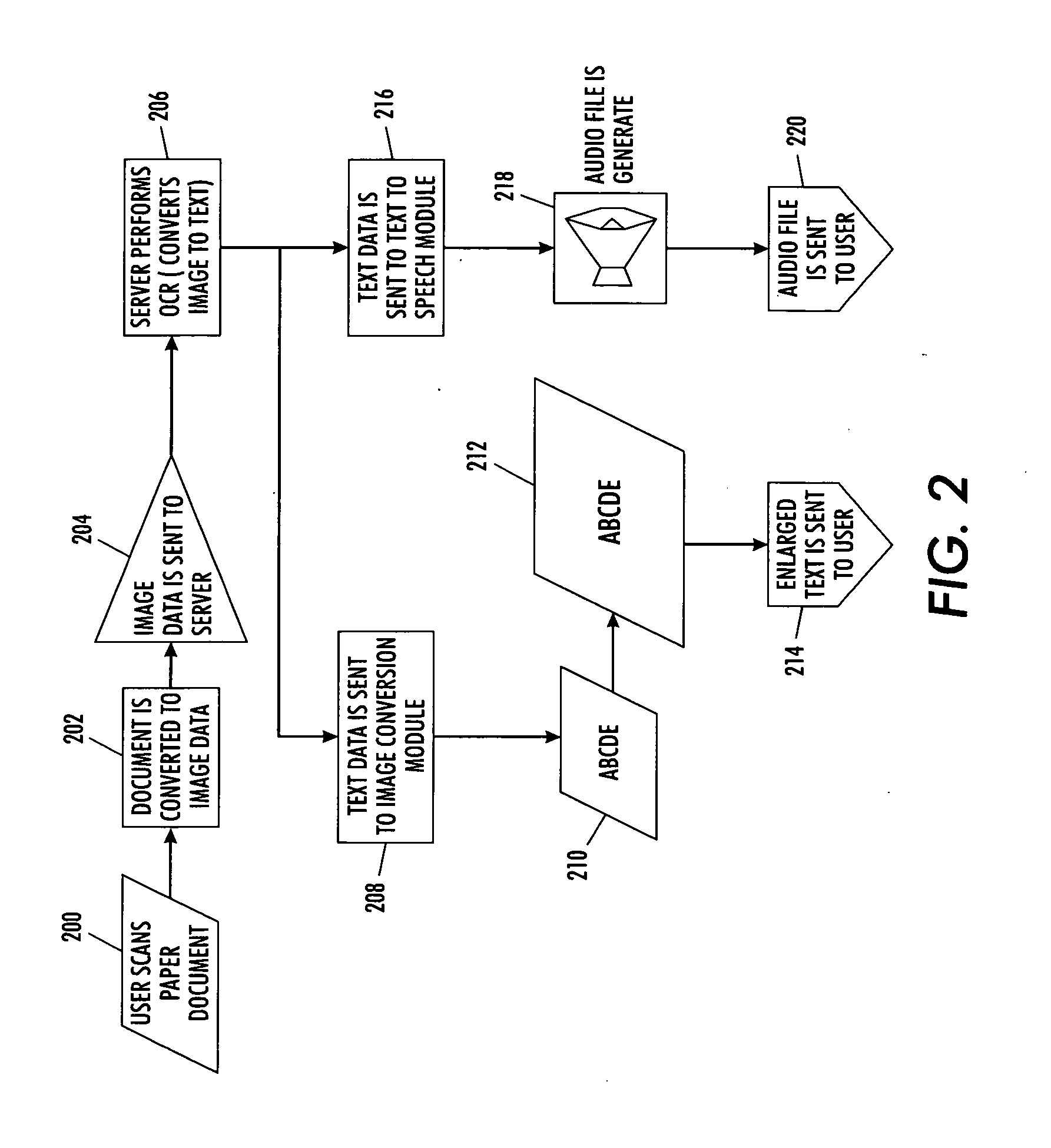Systems and methods for the visually impared
a system and visual impairment technology, applied in the field of visual impairment systems and methods, can solve the problems of not always having the most current information available in the audio tape library, tapes that do not allow the user to select a pace, and the individual who is visually impaired cannot exercise reading skills, etc., to achieve the effect of changing the contrast or coloring of text and/or background, and increasing the size of characters
- Summary
- Abstract
- Description
- Claims
- Application Information
AI Technical Summary
Benefits of technology
Problems solved by technology
Method used
Image
Examples
Embodiment Construction
[0015] As discussed above, prior solutions to the problem of providing visually impaired users with enhanced visual and audio aids required specialized devices or manual intervention. This solutions presented herein provide automation of process, error proofing through automation, and customization when needed. These solutions enable significant cost savings by using software to leverage existing hardware equipment (e.g., multi-function devices (MFDs)) and generate output suitable for the visually impaired via an automated software workflow.
[0016] As shown in flowchart form in FIG. 1, embodiments herein provide / acquire a document in electronic form in item 100 (e.g., by receiving, copying, retrieving from storage, scanning combined with optical character recognition, etc.) and receive user input regarding visual impairment in item 102. In response to one or more levels of user visual impairment, embodiments herein automatically change (for example, immediately after scanning text) ...
PUM
 Login to View More
Login to View More Abstract
Description
Claims
Application Information
 Login to View More
Login to View More - R&D
- Intellectual Property
- Life Sciences
- Materials
- Tech Scout
- Unparalleled Data Quality
- Higher Quality Content
- 60% Fewer Hallucinations
Browse by: Latest US Patents, China's latest patents, Technical Efficacy Thesaurus, Application Domain, Technology Topic, Popular Technical Reports.
© 2025 PatSnap. All rights reserved.Legal|Privacy policy|Modern Slavery Act Transparency Statement|Sitemap|About US| Contact US: help@patsnap.com



